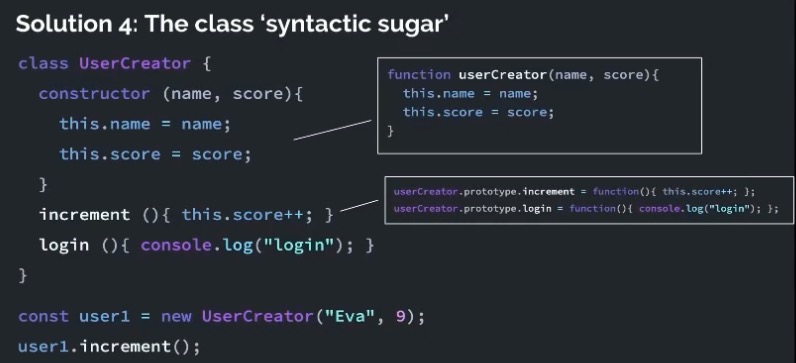Classes & Prototypes (OOP)
OOP ⇒ a paradigm for structuring complex code
Prototype chain ⇒ the feature behind the scenes that enables emulation of OOP
difference between proto and prototype
new and class keywords
object.prototype
what’s the new keyword doing under the hood?
Programming paradigms provide:
- Easy to reason about
- Easy to add new features
- Efficient and performant
Objects ⇒ store functions with their associated data (encapsulation)
functions in objects are called methods.
Object.create(null) ⇒ {}
factory function ⇒ create & generate objects from a function

There are problems with the approach used in upper image.
- Each user we create, we have the increment function (same functionality) stored for each of these objects. We could have only 1 of this function.
- If in the future we want to add a functionality, we need to manually add it for all the objects.

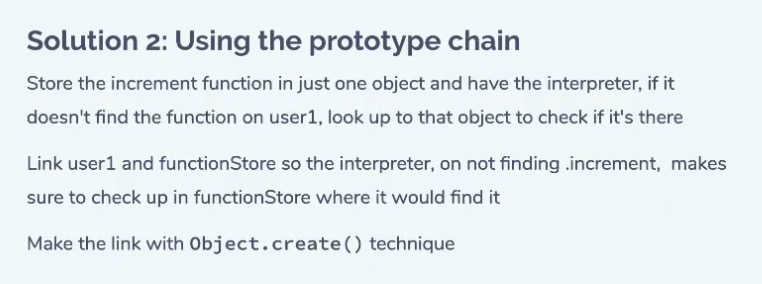
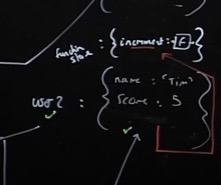
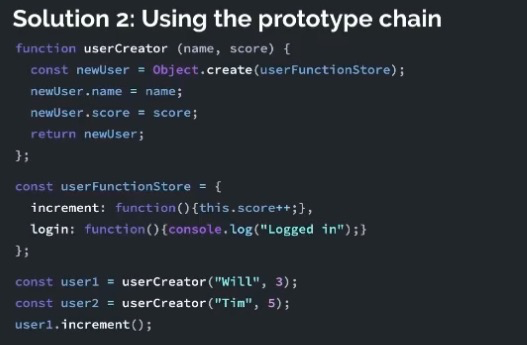
Object.create(functionStore)
This object will have an unremovable link to the functionStore
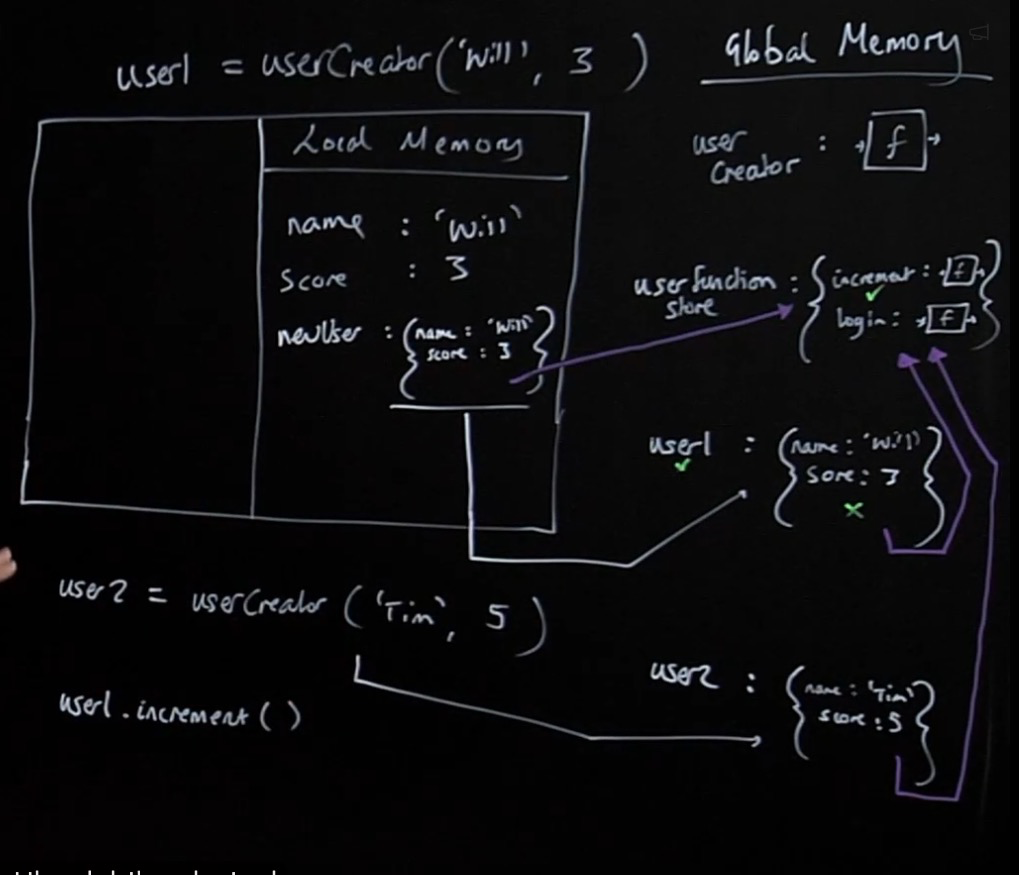
Object.create creates an empty object always.
A hidden propert in this object ( proto ), provides a proto link to the functionStore object. This link allows the object to look for properties not on object to be looked at proto object. Through its proto reference link. (prototype chain)
This way, this code is saved in memory only once, and we don’t need to waste memory for every object.
use of ‘this’ in functionStore ⇒ automatically you get an implicit parameter ‘this’ that is assigned to the object on left-hand side.
JS’s prototype feature: If you can’t find the function, look for linked ones
Object.prototype ⇒ is an object. All objects in JS has a proto property containing useful functions.
.hasOwnProperty() ⇒ one of those functions.
Object.create() lets us have control over the proto property.
Object.prototype’s proto is null.
Arrow functions & this ⇒ Arrow functions - this assignment are automatically lexically scoped. ‘this’ will be determined by where the function is saved.
(if it’s not an arrow function, this will assigned to global (bad language design?)
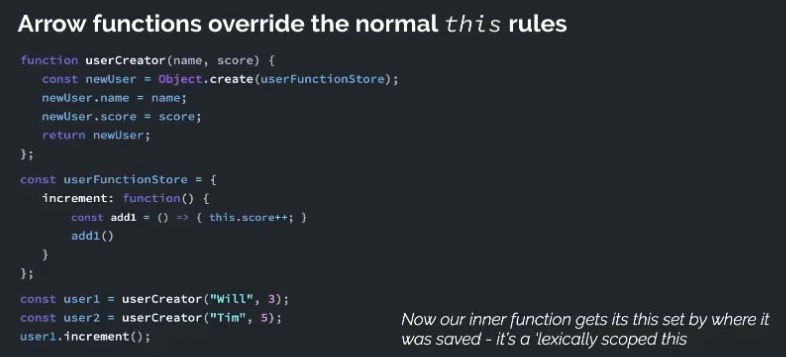
If you’d use an arrow function for increment, ‘this’ would have referred to where the function is created. which is the global.! this is the important difference between where and when to use arrow functions.
This is what happens behind the scenes. But is not standard. The standard is
new
All this can be automated with ‘new’
class
It’s a syntactic sugar. ES6 ES2015
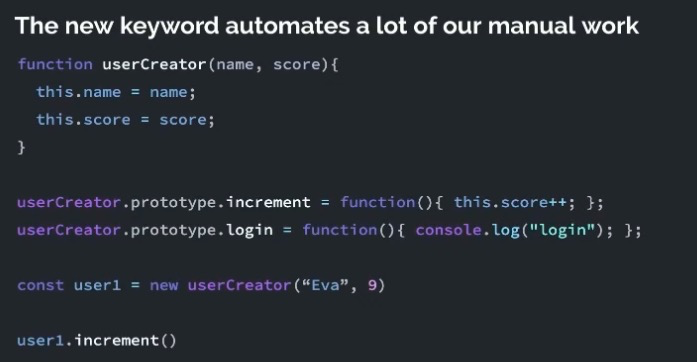
We used to declare the function and the function object that are combined later separately.
To do these together, we can use class.

